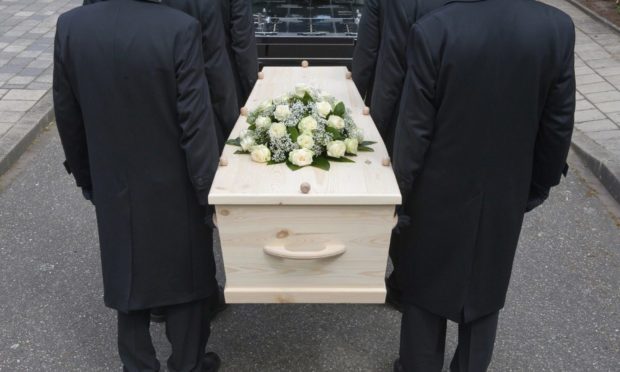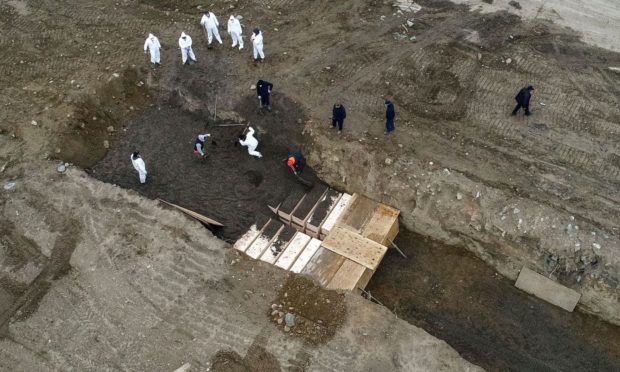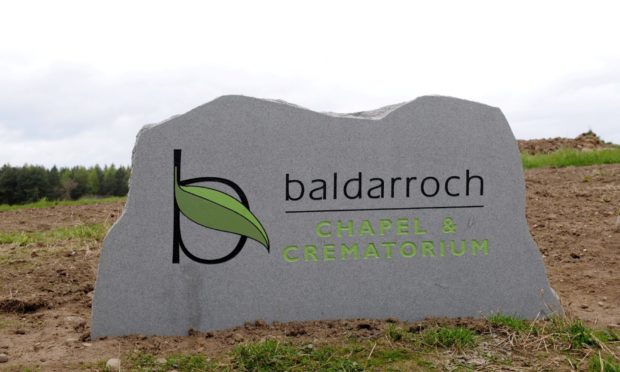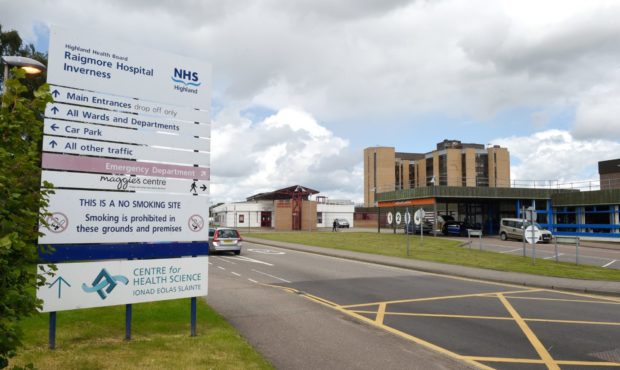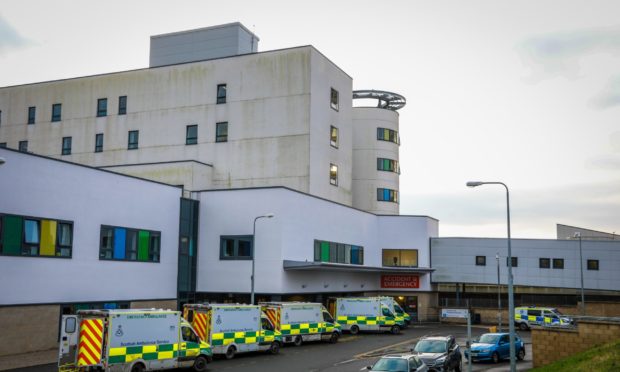A north-east local authority was drawing up contingency plans in case it had to bury up to 51 coffins every day at the peak of the pandemic.
Newly released documents show how Aberdeenshire Council officials believed they could create the capacity – which is double their normal rate for a whole week.
But to handle that number of burials they would have had to suspend all other groundworks in the region, hire multiple mini diggers, and find a new way to shore up the graves.
Similar emergency plans were being drawn up by authorities across the country before, during and after the pandemic hit Scotland last year.
In Fife, about 600 extra mortuary spaces were created as contingency measures were put in place, overseen by weekly meetings of a “Mass Fatalities” group.
And in Highland, 200 burial lairs were pre-emptively prepared at graveyards, while extra crematorium staff were trained, and temporary mortuary units were purchased.
Most of the councils and health boards we contacted indicated that the capacity of their cemetery, crematorium or mortuary services was not impacted during the crisis in the end.
Official figures show that there have been more than 10,100 Covid-related deaths across Scotland during the pandemic, including 250 in Aberdeenshire, 503 in Fife and 129 in Highland.
Aberdeenshire Council hit the headlines in May last year when officials suggested they could have been forced to follow New York by creating “strips” of mass graves.
It followed shocking drone footage of Hart Island in New York, in which workers were filmed stacking coffins in deep trenches after burials jumped to five times the usual number.
Philip McKay, the north-east council’s head of roads, landscapes and waste services, said at the time that initial studies showed a bleak picture, and that within “part of that modelling there was ideas similar to New York’s approach, that we may have to open what effectively would be strip lairs”.
In documents which have now been released under freedom of information (FOI) laws, officials noted that Baldarroch crematorium was already “running almost at capacity”, cremating five coffins a day.
They said: “If we suspend all other grounds operational works we estimate (based on a full staff and core hours) we could increase the number of coffin interments to 34 per day (across the whole Shire), possibly to 51 per day, however this would create challenges with the availability of shoring.
“We could mitigate this by shoring the top 3 feet only and excavating the remaining 4 feet by digger with no one allowed to enter the lair, or we could purchase timbers to brace and leave them in the lair.
“Interments currently take place on Saturday mornings, if enough staff were available could carry on into afternoon and could also do Sundays.”
The unnamed officers added that the council had 32 JCB diggers available, but these would be “too large for many of our burial grounds”, so mini diggers would have to be hired.
Mr McKay said the documents were considering “reasonable worst case scenarios”, with Grampian Local Resilience Partnership (GLRP) having “planned accordingly for many scenarios including mass fatality”, in March last year.
He also said that the maximum weekly interments experienced in the Aberdeenshire Council area during the pandemic was 48, with the highest in one day rising to 17.
In a pre-pandemic year, Aberdeenshire Council has an average of 25 interments a week, although it varies considerably throughout the year.
Other documents show that NHS Orkney was concerned about a “national shortage of body bags”, and that it had no appropriate vehicle to transport the deceased to a “pop-up” mortuary that was being created at the old Balfour Hospital site.
NHS Shetland, meanwhile, said: “The possibility of hiring a temporary additional mortuary unit and reassigning staff to support this, and related services such as grave digging, were considered should they have been required.”
At Highland Council, about 200 burial lairs were prepared in advance, while additional support staff were identified, including a further nine who were trained for crematorium operation in Inverness.
Three temporary mortuary units were purchased, each with a capacity of up to 15, with a council building in the Highland capital used for training staff to use them.
One unit was sent to Skye, while there was a 70-space temporary unit discussed for Raigmore Hospital, and consideration was also given to the “possible hire and conversion of suitable commercial premises – one in Easter Ross and one in Inverness”.
In Fife, meetings of a “Mass Fatalities” group continue to be held weekly.
Mortuary spaces were increased by NHS Fife from 98 to 302 on the Victoria Hospital site in Kirkcaldy, with an additional 402 spaces also made available by Fife Council.
A mass fatalities dashboard was created and there is daily reporting of mortuary capacity to allow for escalation where required.
The health board said: “At no time has occupation of mortuary spaces exceeded the 70% trigger for escalation.”
Despite some authorities reporting extensive contingency planning for mortuary and burial services during the pandemic, others said they did not hold any such information, including Dundee City Council, NHS Highland and NHS Western Isles.
NHS Tayside and Orkney Islands Council, meanwhile, refused to disclose its discussions on the subject, describing it as “Official Sensitive”, while Perth and Kinross Council is still to respond to the request from February.
Shetland Islands Council said it had “no correspondence on this matter”, but that it had 10,000 available lairs, including “pandemic lairs” set aside should they have been required.
Argyll and Bute Council said: “Throughout the pandemic, numbers of burials and cremations have generally not surpassed the seasonal averages in Argyll and Bute, and on this basis, no specific meetings or discussions were held around capacity.”
On the Aberdeenshire document, Mr McKay said: “Aberdeenshire Council is a member of the Grampian Local Resilience Partnership (GLRP) along with other neighbouring authorities and key stakeholders.
“In March 2020, this group carefully studied the emergence of the Covid-19 pandemic and planned accordingly for many scenarios including mass fatality.
“Aberdeenshire Council, with the assistance of this group, reviewed the pandemic excess death reasonable worst case scenarios modelling to determine the potential need for increased interments.
Aberdeenshire Council… reviewed the pandemic excess death reasonable worst case scenarios modelling to determine the potential need for increased interments.”
“An average of 34 interments per day, with the potential to rise to 51 per day, with full utilisation and deployment of resources – both plant and persons – across the service was considered possible.
“The maximum weekly interments experienced in Aberdeenshire Council in the pandemic was 48, with the highest daily interments rising to 17. In a pre-pandemic year Aberdeenshire Council has an average of 25 interments a week, albeit this does vary considerably throughout the year.
“The work of the GLRP group to-date and the lessons learned from the pandemic will help the council plan accordingly for any future pandemics or mass fatality event.”
